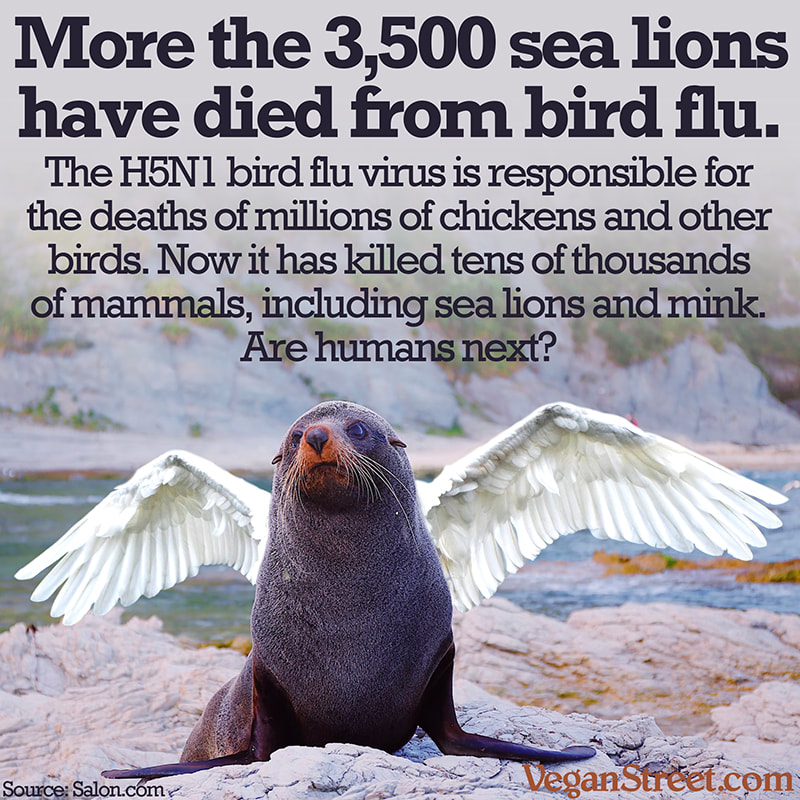Your choices have immense consequences, even if you don't see them. Is eating animals worth the lost lives and huge destruction?
Nearly 3,500 sea lions - over three percent of the native sea lion population - have died in Peru of H5N1, also known as avian or bird flu, which has jumped the species barrier into the marine mammal population. Peru’s National Service of Protected Areas by the State (SERNANP) has also reported the deaths of at least 63,000 birds due to the virus.
H5N1 occurs naturally in wild aquatic birds but it can spread easily to birds in concentrated animal feeding operations. Once the virus enters the operation through a host, for example, insects or on a worker's boots, it can rapidly mutate into a highly-pathogenic virus very quickly.
The spillover disease is also zoonotic to humans.
"Avian flu has also infected a record number of birds and some mammals across the United States.
Since late 2022, scientists have detected this virus in more than 100 species of wild birds like ducks, seagulls, geese, hawks and owls in the US, where cases have also been identified among bears, foxes, bobcats, raccoons, bears, and dolphins.
There have also been a handful of human cases. World Health Organization Director General Tedros Adhanom Ghebreyesus said last month that the risk to humans remains low but added, 'we cannot assume that will remain the case.'"
Our sources for this meme are Salon.com and CNN.
Nearly 3,500 sea lions - over three percent of the native sea lion population - have died in Peru of H5N1, also known as avian or bird flu, which has jumped the species barrier into the marine mammal population. Peru’s National Service of Protected Areas by the State (SERNANP) has also reported the deaths of at least 63,000 birds due to the virus.
H5N1 occurs naturally in wild aquatic birds but it can spread easily to birds in concentrated animal feeding operations. Once the virus enters the operation through a host, for example, insects or on a worker's boots, it can rapidly mutate into a highly-pathogenic virus very quickly.
The spillover disease is also zoonotic to humans.
"Avian flu has also infected a record number of birds and some mammals across the United States.
Since late 2022, scientists have detected this virus in more than 100 species of wild birds like ducks, seagulls, geese, hawks and owls in the US, where cases have also been identified among bears, foxes, bobcats, raccoons, bears, and dolphins.
There have also been a handful of human cases. World Health Organization Director General Tedros Adhanom Ghebreyesus said last month that the risk to humans remains low but added, 'we cannot assume that will remain the case.'"
Our sources for this meme are Salon.com and CNN.
Meme, H5N1, Bird Flu, Avian Flu, Sea Lions, Infections, Pandemic, Zoonotic, Disease
